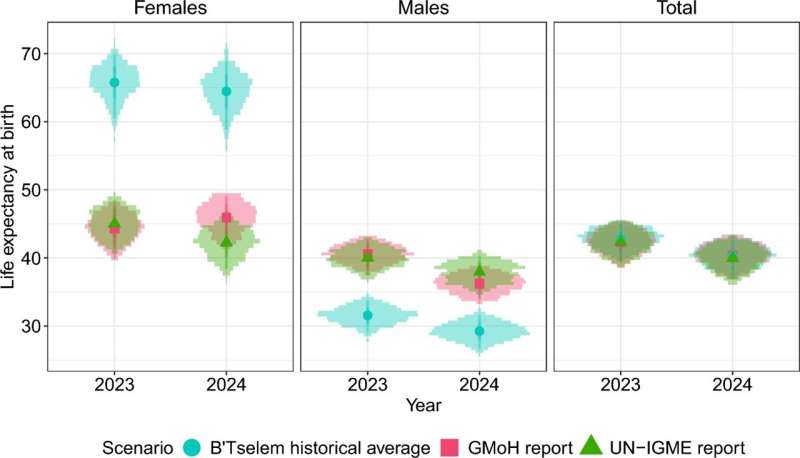
A recent study conducted by the Max Planck Institute for Demographic Research (MPIDR) and the Center for Demographic Studies (CED) has revealed the staggering impact of conflict on mortality in Gaza. Between October 7, 2023, and December 31, 2024, an estimated 78,318 people lost their lives due to the ongoing violence. This has led to a dramatic decline in life expectancy, which in 2024 fell to nearly half of what it would have been without the war. A follow-up analysis indicates that by October 6, 2025, the death toll may have exceeded 100,000.
The research, published in the journal Population Health Metrics, underscores the far-reaching effects of armed conflict and political instability on human life. Researchers Ana C. Gómez-Ugarte, Irena Chen, and their colleagues utilized a novel approach to assess mortality, emphasizing the uncertainty surrounding available data from conflict zones. They acknowledged that incomplete and distorted data often hinder accurate mortality estimates, making robust calculations essential for understanding the true impact of such crises.
To achieve their estimates, the researchers drew upon various public sources, including the Gaza Ministry of Health, the Israeli Information Center for Human Rights in the Occupied Territories (B’Tselem), the United Nations Office for the Coordination of Humanitarian Affairs (OCHA), and the Palestinian Central Bureau of Statistics (PCBS). Gómez-Ugarte remarked, “The tension between data limitations and the demand for meaningful metrics was the impetus for this study. We demonstrate that these challenges do not have to be mutually exclusive.”
Methodology and Findings
The study employed a pseudo-Bayesian modeling approach, which accounted for two significant types of measurement errors: under-reporting of fatalities by official sources and uncertainties regarding the age and gender of victims. The estimates indicated that 78,318 people were killed directly as a result of the conflict during the specified period, with a range between 70,614 and 87,504.
The implications of this unprecedented mortality are profound. According to the researchers, life expectancy in Gaza plummeted by 44% in 2023 and 47% in 2024 compared to projections had the conflict not occurred. These figures translate to losses of approximately 34.4 years and 36.4 years, respectively.
The demographic patterns of violent deaths during this period closely mirrored those observed in various genocides documented by the United Nations Inter-Agency Group for Child Mortality Estimation (UN IGME). While the term “genocide” carries specific legal criteria, the study did not focus on this aspect but rather aimed to provide a flexible approach to estimating conflict-related mortality.
Gómez-Ugarte further explained that the estimates of war’s impact on life expectancy likely represent a lower limit of the actual mortality burden, as the analysis concentrated solely on direct, conflict-related deaths. She noted, “The indirect effects of war, which are often greater and more long-lasting, are not quantified in our considerations.”
Importance of Accurate Mortality Measurement
Accurate measurement of mortality rates in conflict situations is not only important but necessary for informed decision-making and humanitarian response. Gómez-Ugarte emphasized that urgency should not compromise methodological rigor. She encouraged other researchers studying the demography of conflict to incorporate uncertainties directly into their mortality estimates using advanced statistical tools.
The findings of this study highlight the critical need for reliable data in assessing the human cost of conflict. As the situation in Gaza continues to evolve, understanding the implications of mortality and life expectancy remains vital for policymakers and humanitarian organizations.
For further details, the complete study can be accessed in the article titled “Accounting for uncertainty in conflict mortality estimation: an application to the Gaza War in 2023-2024” in Population Health Metrics.







